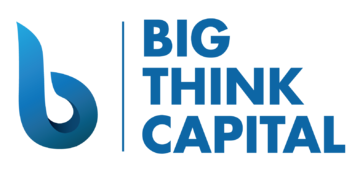
Small business loans aren’t just a lifeline in tough times; they’re a powerful tool for growth and expansion. In this blog post, we’ll decode how to effectively harness the power of small business loans to scale your operations and enhance your market presence.
Understanding Different Types of Small Business Loans
Choosing the right small business loan can be a pivotal decision for entrepreneurs looking to expand. Understanding your options can open doors to new possibilities and ensure you select the most suitable loan for your business’s specific needs.
Description of Common Small Business Loan Types
Diving into the world of small business financing, you’ll encounter several common loan types:
- Term Loans: These are traditional loans with a set repayment schedule and a fixed or variable interest rate.
- Short-term Loans: Designed for immediate needs, these loans typically have a higher interest rate but a shorter repayment period.
- SBA Loans: Loans guaranteed by the U.S. Small Business Administration, offering favorable terms for small businesses.
- Business Lines of Credit: Flexible borrowing options that allow business owners to draw funds as needed, up to a certain limit.
- Equipment Financing: Loans specifically for purchasing business equipment, where the equipment itself often serves as collateral.
- Merchant Cash Advances: An advance on future credit card sales, providing quick access to capital with repayment based on a percentage of daily sales.
Role of the U.S. Small Business Administration in Guaranteeing Loans
The U.S. Small Business Administration (SBA) offers a guarantee to lenders on certain types of loans, reducing the financial risk to lenders and often leading to more favorable loan terms for small business borrowers. This guarantee can be especially beneficial for new businesses with less established credit histories.
Private Versus Government-Backed Loans
When considering financing options, it’s important to distinguish between private loans from banks or financial institutions, and government-backed loans, such as those guaranteed by the SBA. While private loans may offer quicker turnaround times, government-backed loans typically offer lower interest rates and longer repayment terms.
Term Loans, Lines of Credit, and Merchant Cash Advances
Term loans are a go-to solution for long-term investment, often used for purchasing real estate or significant renovations. Lines of credit are more akin to credit cards, perfect for short-term expenses and cash flow management. Meanwhile, merchant cash advances serve businesses with high credit card sales volumes that need fast access to cash, though typically with higher costs.
Leveraging Loans for Business Expansion
When it comes to scaling your small business, financial agility is key. Small business loans can be a powerful fuel for growth, unlocking opportunities that might otherwise be out of reach. However, it is crucial to approach loan-financed expansion with a sound strategy and clear understanding of both the benefits and risks involved.
Planning Expansion Initiatives
Every successful business expansion begins with a well-crafted plan. Whether you’re considering entering new markets or expanding your product lines, mapping out each step with financial precision is essential. Small business loans can give you the upfront capital needed for such endeavors, enabling investments in marketing research, product development, and market-entry strategies without depleting your cash reserves.
Assessing Feasibility and Timing
Before you leverage a loan for expansion, conduct a thorough feasibility study. Timing is equally critical; tap into industry trends and forecasts to predict the best moment for rolling out your growth initiatives. Aligning your expansion with the right timing can multiply the effectiveness of your investment and ensure better use of loan funds.
Advantages and Risks of Leveraging Loans for Growth
Using loans can accelerate business growth and generate ROI that outpaces the cost of borrowing. The advantages include the ability to move quickly on growth opportunities, retain cash for operational buffers, and potentially reap tax benefits from interest deductions. However, there are risks such as overleveraging, potential for default, and the increased pressure to generate revenues to cover debt service. It’s vital to balance these factors to ensure that a loan remains an asset to your business rather than a liability.
Advantages:
- Immediate access to capital for growth
- Cash reserve preservation
- Potential tax advantages
Risks:
- Increasing debt-to-income ratio
- Risk of default and credit damage
- Requirement of steady revenue increase
By leveraging small business loans strategically, you can create a robust platform for your business’s expansion that aligns with your long-term growth goals. Consider all parameters carefully and make informed decisions to use financial leverage to your advantage.
Smart Investment Strategies With Loan Funds
Securing a small business loan is an important step in the growth of your business, but equally crucial is how you choose to utilize those funds. Making intelligent investment decisions can help you maximize the potential of your loan and set your business on the path to sustainable growth and long-term success.
Deciding on Investments That Offer High Return Potential
The key to smart investing with small business loans is to focus on opportunities that promise a high return on investment (ROI). Choosing to channel funds into areas that will generate more revenue or reduce costs in the long run will ensure that the loan not only pays for itself but also contributes to your business’s profitability.
Examples of Strategic Investment Areas
Technology: Up-to-date technology can streamline operations, improve customer experience and keep you competitive.
Equipment: Investing in new or upgraded equipment can increase your production capacity and the quality of your products or services.
Real Estate: Purchasing property can reduce long-term costs associated with renting and can appreciate in value over time.
Avoiding Common Pitfalls When Investing Loan Funds
While the prospect of growth is exciting, it’s important to avoid certain pitfalls when investing your loan. Going all-in on trends without researching, spending on unnecessary upgrades, or failing to plan for the maintenance costs of new investments can lead to financial strain. Ensure every investment is backed by a solid business case and a clear understanding of how it will benefit your business.
Scaling Operations Through Strategic Investment
Every ambitious small business reaches a point where growth becomes a strategic priority. Utilizing a small business loan strategically can provide the financial leverage needed to scale operations efficiently and effectively. But how do business owners ensure that their investment decisions will indeed support scaled growth? Let’s dive into the crucial processes of scaling your operations through strategic investments, made possible with the help of small business loans.
Thorough Analysis of Scaling Opportunities
Before committing loan resources to any new project, a meticulous analysis of potential scaling opportunities is critical. This analysis should encompass market research, competitor analysis, and financial forecasting to gauge the potential returns on investments (ROI). Understanding where and how to deploy your loan funds can be the difference between mere expansion and sustainable growth.
Funding Equipment or Technology Upgrades With Loan Proceeds
Investing in modern equipment or the latest technology can significantly boost your operational capacity and efficiency. Using loan proceeds to fund these purchases allows businesses to maintain cash flow while still capitalizing on the growth potential that new assets can provide. Whether it’s advanced machinery to increase production output or innovative software to streamline services, strategic upgrades can be a game-changer for scaling your business.
Enhancing Operations Efficiency to Support Scaled Growth
To sustain growth, scaling operations must go hand-in-hand with enhancing efficiency. Investments should focus on optimizing processes, reducing waste, and improving the quality of your offerings. Implementing robust inventory management systems, upgrading to energy-efficient utilities, or adopting a customer relationship management (CRM) software are all examples of how loan funds can be utilized to create a more efficient, scalable operation.
Secure Any Loan With Big Think Capital
Whether you’re eyeing to upgrade equipment, expand operations, or simply stabilize cash flow, securing the right loan is pivotal.
With Big Think Capital, navigating the complex landscape of small business financing becomes surprisingly simple. Investing in your business with the support of a tailor-made loan can propel you towards your growth objectives with greater confidence and financial acumen.








